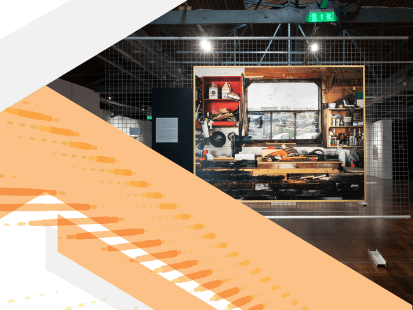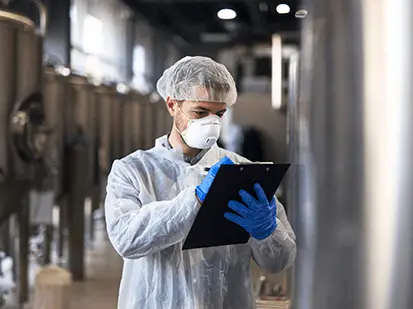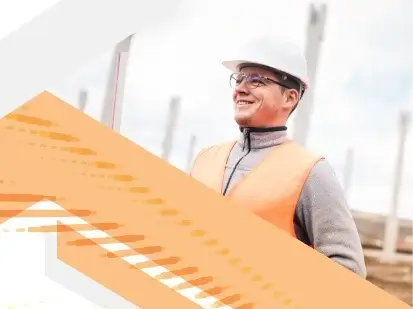FORD OTOSAN - Award-Winner RFID Hybrid Project
NUMBER OF ASSETS

25.000+ Crates

46 Forklifts

46 UHF Antenna Sets

160 Anchors & Gateways
FORD OTOSAN
Ford Otosan is a Koç Holding partnership, and is one of the top 3 exporting companies of Turkey since 2004, is the leading exporter in automotive sector in the last 10 years, and the export champion of Turkey in the last 6 years. Ford Otosan continued its export success in 2021, exporting vehicles and spare parts worth 6.2 billion USD to 96 countries on five continents. Ford Otosan started off with the vision of “becoming Turkey’s most valuable and preferred industrial company”, and it currently operates at five plants, namely Gölcük and Yeniköy Plants in Kocaeli, Ford Otosan Eskişehir Factory, and the R&D Center and Spare Parts Warehouse at İstanbul Sancaktape. Ford Otosan is the most valuable automotive company listed on İstanbul Stock Exchange, and it is the leading employer of Turkish automotive sector with more than 14,500 employees.
Ford Otosan has the capacity to manufacture 455,000 vehicles, 80,000 engines and 140,000 transmission units in total, and it aims at becoming a global manufacturer by acquiring Ford’s Craiova factory in Romania, increasing its manufacturing capacity to more than 900 thousand vehicles and its number of employees to more than 20 thousand individuals.
The Purpose of the Project and the Expectations
- The main purpose is tracking the in-plant locations of the materials entered to and dispatched from the stocks,
- Determination of the type, number, zone and duration of use of the dispatch crates,
- Tracking the location of the forklifts with sub-meter precision, measuring their efficiency, and analysing forklift redundancy or insufficiency,
- Complete and accurate reading by the forklifts of the UHF tags on the metal crates,
- As the result of all these improvements, providing efficiency increase in material entry and dispatch operations.
Challenges Encountered and Solutions Developed
- It was required to provide the real time location tracking with sub-meter precision of the forklifts operating actively in an indoor area of approximately 120 thousand square meters. For this purpose, comprehensive site discovery and testing activities were carried out, and more than 150 active RFID based UWB Anchors were positioned in a way to provide location tracking with sub-meter precision.
- In order to enable the forklifts to accurately read the 25 thousand - and counting - crates tracked, the areas with high number of crates were optimized, and the reading problems arising from the method of transport and stacking were eliminated.
- A hybrid project was implemented by using active RFID based locating systems to track the forklifts in the field and by installing passive RFID systems with UHF capability on the vehicles for the identification of the crates by the forklift; thus, a cost-optimized solution was provided for tracking 25 thousand crates.
Project Gains
- The crate types, to which the UHF tags on the crates belong, were defined in the system, and subsequently, the tracking and analysis of the operation were provided by means of Wipelot Real Time Location System.
- The hybrid devices on the forklifts were used for reading the UHF tags on the crates and transmitting this data to the center. While transmitting this data, the anchors and the hybrid devices on the forklifts continuously measure and transmit the distances the center, enabling the analysis of the current zones and the duration of use of the crates.
- While the locations of the forklifts are tracked with high precision on Wipelot’s central software, the locations of all the crates in the operation process are recorded instantaneously, and displayed on the layout in the software.
- The daily operation performances of the forklifts are measured, enabling the planning of the equipment requirements. Thus, the equipment units are directed according to the requirements, minimizing the loss of time in material entry and dispatch operations and enhancing efficiency.
- With the implementation of the system, the number of the equipment used for unloading the vehicles and the number of personnel assigned for tracking the number and accuracy of the incoming crates were optimized.
- Thanks to the tracing of the forklifts and the traceability of the crate movements, the line supply efficiency was enhanced.
- Regarding the crate inventory checks, the costs incurred due to the in-house count operations and for the periodic counting of the crates at the suppliers were eliminated, and the instantaneous traceability of the locations of the crates (whether in the factory or at the supplier) provided efficiency in the count operations carried out at these places.



